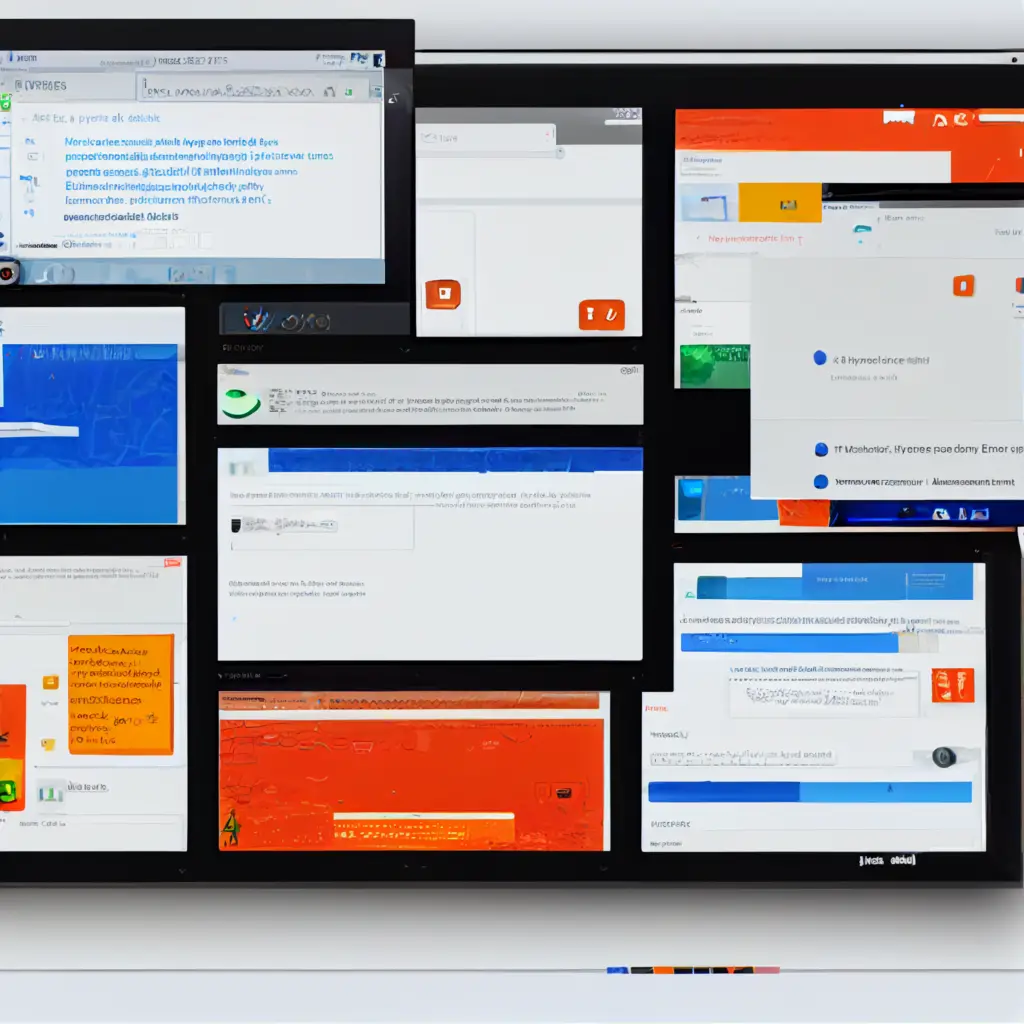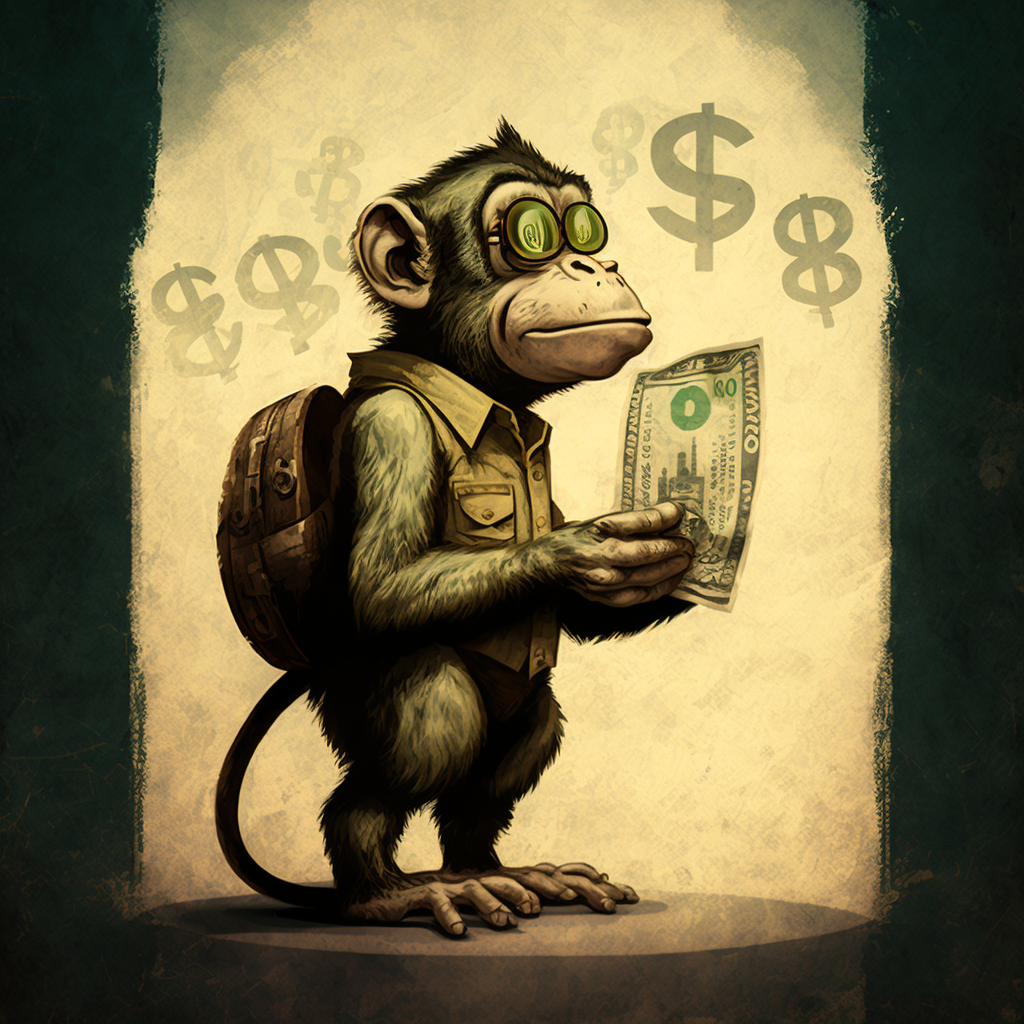Since the day I started blogging and researching how to do well in this industry, I’ve heard one constant piece of advice: start building your email list.
Now that I’m more experienced I realized… they were absolutely right!
If you ever want to make decent money in the blogging world, you need to build an email list.
So why not start right now in 2020?
Building an email list can be a daunting task for a non-techie (like myself). Fortunately, there’s a company out there called Substack that makes this incredibly easy.
I love it when things are easy. That’s why I wrote this easy and honest guide for those new to the Substack email list platform.
Let’s get started!
Can I make money with a Substack newsletter?
For sure! But don’t expect to make a million dollars, or even $10 right away.
Let’s start off by asking a few questions:
- Is your goal to quit your job and start a new career?
- Are you trying to make a new side hustle for some extra coffee money?
- Do you just want to start writing & creating for fun?
It’s important to set your priority before delving further into Substack. But luckily for us, all three are potentially achievable on the platform!
If you’re new to blogging and newsletters in general, you should also be aware that this is a long-haul game.
You won’t get rich overnight, no matter what e-marketing course tells you otherwise. The only way that ever happens is if people pay tens of thousands of dollars for ads or to influencers to sneak their way into success. Or if you’re famous.
I’m going to assume that you’re a normal person and don’t want to do that/haven’t starred in the latest Hollywood Blockbuster.
This leads me to my mantra for success factors on any of these platforms:
Time + Repetition + Quality = Success on Substack
The good news is if you follow the advice below you can be on your way to making side hustle money with Substack. Or even potentially over $200,000 a month like Robert Cottrell (after many years of hard work and high quality, of course).
1. Switching careers
If you’re here to start a new career — know that it takes time.
I was in your shoes a bit over a year ago. I was earning a lot of money as a corporate product manager for a multinational tech company. But I wasn’t happy, so I changed things.
The one regret I have is that I didn’t start my side hustle on the side.
Since this is a time game, I could’ve easily researched these endeavors while still working and started them slowly. Slowly build an audience. Slowly produce content. Slowly improve my craft.
I went with the accelerated version of this — I quit, traveled, and wrote every day. Sure, I’ve probably improved at a faster rate — but I’d be much happier to be slightly behind while still having a year’s worth of paychecks!
I’d advise doing it on the side for a while and gain some traction before you jump head-first into it.
Either way, start right now with guides like these to learn the ropes of what you want to do. There’s a lot of paid info out there, but there’s even more free stuff.
I cover all the basics below to give you a good idea of if Substack is for you or not, so please read further!
2. The true side hustle
For those that truly want to use Substack as a source of extra (but not the main) income — welcome to Substack!
One of the nice parts about newsletters is that you don’t necessarily need to be working on them full time. The choice is completely yours if you want to put in 1 hour a week or 20.
And since this is a time-based game, it makes sense to do a little work — consistently — every week to slowly build a content base. Since this is Substack and not a normal blog, your audience & following should grow right alongside your content production.
Please read on for all the basics of Substack and if this is the right platform for you to start your writing/podcast side hustle on.
3. Just here for fun
If you’re just looking for a way to get people to see the results of your writing hobby — Substack is also the perfect place for that.
- It’s free to use
- It’s incredibly easy to navigate and setup
- There’s no penalty for missing a week or two here and there
There’re lots of places for you to post your writing if it’s just a hobby, but right now, my two favorites are Medium and Substack.
The free-to-use factor is definitely a huge plus. And setting up a personal blog on WordPress, etc, can take a long time to learn (or a couple of hundred bucks to pay someone).
Freemium platforms that are easy to use are great for the hobby writer. And who knows, maybe people will enjoy your work enough that you start to make some cash too (or even a living)!
Takeaway
For all 3 of the above type of people, I believe Substack has a place for them. Just keep in mind that it takes time to be successful on this platform (or any other).
But if you enjoy writing and love people seeing your work — then you’ll probably stick with it.
Before you know it, you might find yourself making a few hundred extra dollars every month (or potentially a lot more later on).
Let’s now look at some key facts about Substack to start.
Substack statistics
Of course, we all want to live the dream and be able to earn a living by writing and creating— even better if it’s from blog posts sent to our followers. But being a free-to-use platform, there is a wide variety of earnings from newsletters on Substack.
And again, the platform is still in its early phases. IMO, this is a bonus. Early adopters get supported much more by new platforms than late joiners.
Here’s where Substack is at in terms of subscribers:
- The company was launched in October 2017, so you can still take advantage of first mover advantage
- There are over 50,000 subscribers paying for at least 1 newsletter
- 20% of all newsletters offer a paid version
- There are millions of readers on the platform
- And thousands of writers
- Unfortunately, it’s hard to find exact subscriber numbers today
- It has a Domain Authority of 68 according to Moz (vs 96 for Medium)
- It’s likely that only the top 1% of writers are making most of the money
- But, the 10 top writers on the platform are earning between $10,000 to $200,000 a month!

Why write newsletters on Substack?
To make money, of course! But in a better way than other platforms. Substack’s whole premise is to bring the power back to the individual writer.
Many of us have depended on platforms and walled gardens to build audiences and hopefully monetize them. But this ‘platform risk’ comes with potential problems:
- Audiences don’t carry over to other platforms
- Platforms can close down and you’ll lose that audience forever (ex. MySpace, Google+, Vine, etc)
- You have to abide by that platform’s rules — or leave
So even though Substack is a platform itself, it’s entire mission is to give you — the content creator — all the power.
“We believe that writers, bloggers, thinkers, and creatives of every background should be able to pursue their curiosity, generating income directly from their own audiences and on their own terms.”
They give you this control versus other platforms in a few key ways:
- You can download your email list whenever you want.
- You choose which posts (emails) are free and which are charged
- You can set the paid subscription fee if you want to charge
- You retain ownership of all content you make (and can even export it)
- It’s a free service! I’ll explain how they make money later on.
Another really cool thing is you don’t have to send out written newsletters. Substack has a podcast function whereby you can use audio instead! Here’s an in-depth guide to that area.
Either way, for those looking for a fun & fast way to start building a new email list, Substack is a great place to get you started.
Do some people make a lot of money on Substack?
There is a surprisingly large amount of creators and writers on Substack that make a huge amount of money each month.
I’m still shocked when I see the top 25 paid writers section on Substack. The fact that people are getting paid thousands, if not tens of thousands of dollars a month for an email newsletter is amazing!
I was curious to see the background of some of the larger earners, and how they grew their subscription base so quickly.
Here’s a few examples of some of the biggest earners on Substack:

1. Bill Bishop — Sinocism
Publication: Sinocism
Story: He started a blog in 2011 about news in China that wasn’t getting shown in the West. When he joined Substack as one of their first creators he had 30,000 true fans. Interestingly, his domain isn’t “.substack”, likely due to his being first on the platform.
Status: #2 on Substack
Earnings estimate: “Thousands of subscribers paying $15 per month” — We can assume his monthly gross revenue is $15,000 to $135,000

2. Anthony Pompliano
Publication: The Pomp Letter
Story: He started investing seriously in 2015 and sharing his learnings through email with family and friends. In particular, he focuses on “the intersection of finance, technology, entrepreneurship, and economics.” His website states he has more than 45,000 members in his email lists (both before and including Substack).
Status: #6 on Substack
Earnings estimate: “Thousands of subscribers paying $10 per month” — We can assume his monthly gross revenue is $10,000 to $100,000

3. Nadia Bolz-Weber
Publication: The Corners
Story: A best selling author of several books, “she writes and speaks about personal failings, addiction, grace, faith, and really whatever the hell else she wants to. She always sits in the corner with the other weirdoes.”
Status: #8 on Substack
Earnings estimate: “Thousands of subscribers paying $5 per month.” — We can assume her monthly gross revenue is $5,000 to $45,000
Takeaway:
- If you already have a large following on social media, email, or a blog — you’re off to an amazing headstart.
- Niches — all of these people have a very specific area that they talk about.
- It takes time to build a following. Most of the above people took around 5 years before you could consider them big. If Substack had been around much earlier, they might’ve been making money sooner.
- Free newsletter — By building up a free email list first, these creators were well-positioned to start charging for extra content after they had a big base.
What are some average performing newsletters on Substack?

1. Ryan O’Hanlon
Publication: No Grass in the Clouds
Niche: Football (Soccer)
Price: $7 per month or $70 per year
Story: O’Hanlon is a podcaster and essayist about the subject of football (soccer). His podcast is called “Infinite Football” and he used to be a senior editor at The Ringer.

2. Azeem Azhar
Publication: Exponential View
Niche: Tech and humanity
Price: $20 per month, $120 per year, buy 3 for $300, buy 11 for $1,000 (to gift)
Story: A prolific writer and entrepreneur, Azeem is also a member of the World Economic Forum’s Global Future’s Council on the Digital Economy and Society. He’s received quite a lot of accolades, even from the founder of Spotify.

3. Seth Simons
Publication: Humorism
Niche: Humor
Price: $6 per month, $60 per year, or $150 special contributor
Story: Seth used to be an assistant comedy editor at Paste Magazine. He writes about the “intersections of comedy and labor.”
What exactly is Substack?
In their own words, Substack is a newsletter subscription platform. A content creator joins the platform for free, and then sends out blog posts as emails whenever they want.
If the content creator wants to charge monthly subscriptions for those articles, they certainly can. They can also make it entirely free as a lead generator.
The best part is, it’s absolutely free to join and use as a creator. Substack makes their money by charging a small percentage (10%) of any paid subscriptions the content producers earn.
So if the newsletter is entirely free — so is the platform for the blogger.
It’s a newish company, only founded in 2017. It was created by Chris Best, Jairaj Sethi, and Hamish McKenzie — all Silicon Valley veterans.
I’m sure that the last fact helped secure funding from the likes of the prestigious incubator — Ycombinator. A few years later and they’ve raised over $21 million so far. It’s also believed they’re now past the $1 million a year revenue mark.
Not bad for a newsletter company that’s based on a decades-old premise!
What does that mean for you, the potential newsletter content creator? Well, for starters, it reduces the platform risk. The higher the chance that Substack is successful, the higher the chance you are too.
It also means it’s still in the early days. If you’ve ever delved into why some people make it big on platforms, one of the most common ways is being an early adopter.
For platforms that become successful in the long run, those early joiners to the programs often have the biggest followings later on — if they stuck with it.
For those more curious about the founders, they did an AMA on Reddit back in 2018. It’s interesting to hear their perspective on things — especially from some of the more blunt questions.
Substack is still definitely in the early stages, but with its proven success, now is a great time to join!
Signing up to Substack
It’s a pretty simple 7 step process to signup to Substack. It took me just under 5 minutes to do it myself.
Just go to this link and follow the simple steps. You first choose how you want to signup, with either email or your Twitter account.
Then you’ll end up at a screen like this and can go from there:
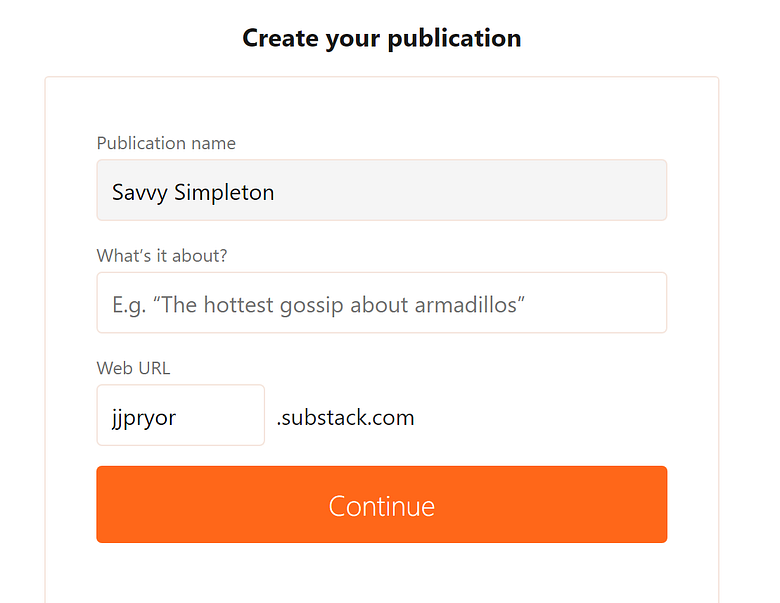
After that, it’s just a few more steps around describing what you’re doing and setting up your bio, account name, newsletter, etc.
Substack has its own helpful guide that you can follow for some tips and tricks along the way.
After that, you have a few options to consider, but you don’t have to do it right away. You can import email lists, blog posts from another platform (like Medium***), and other useful features to give yourself a headstart.
It’s also recommended that you make your newsletter completely free at the beginning.
Chris Best, the CEO, likes to call the free newsletter function a form of “lead generation.” He calls the time it takes you to build a large audience (6 to 24 months ideally) the “incubation period” for a new writer.
Of course, if you have a large following on social media or even an existing newsletter, you’ll have a huge head start.
***One word of caution for Medium bloggers that want to import their posts. As of May 2020, the import function on Substack will accept the Medium zip file you can export your blog posts to.
The problem is when uploaded to Substack, it includes all of your comments and drafts as well! If you’re like me and have hundreds of both, it’s really tedious to delete them one by one. So you might consider uploading them individually or modifying the zip file.
How does writing a newsletter on Substack work?
This is where the fun starts. Try to think of your newsletter as a blog + email sender. You write a blog post (or import it) and then it gets sent out to your followers.
When you make the post, you get the option of choosing whether it will be under the free subscribers or the paid ones — so everything is in your control.
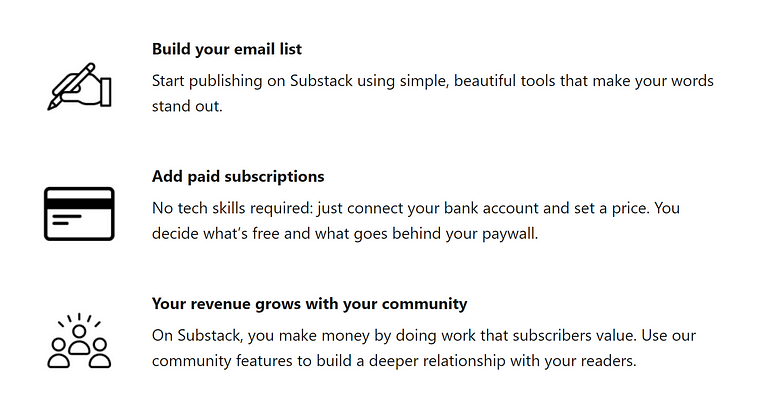
If you want to start a paid version of your newsletter, there’re a few things to consider first.
- How many email subscribers do you currently have or were able to import?
- How much are you trying to make?
- Is your audience very engaged with you? (High email open rate >30%)
Substack says a conversion rate of 10% from free subscribers to paid is considered good. So if you’re looking to make $500 USD per month with a newsletter charged at $5, you’d need around 1,000 free subscribers first.
Not unachievable, but for a brand new blogger, it might take some time.
You also need to consider your paid vs free newsletter strategy.
- Do you want all posts to be paid for? That might limit your ability to get new subscribers.
- Do you want to put all your best content for free to gain subscribers or make that only available as exclusive paid content?
- Will you offer discounts and promotional deals?
- Will you give lead magnets for paid signups? (ex. a free download of your related ebook on Kindle)
You also have a lot of flexibility when setting the price.
- You can set a monthly fee, for consumers think of $1-$10, higher for business letters
- You can set a (usually discounted) annual rate
- You can open a special “Supporters” tier for your super-fans to pay whatever they want per month!
A typical example of a personal newsletter would use all three options and have price points of $5/mth and $50/year.
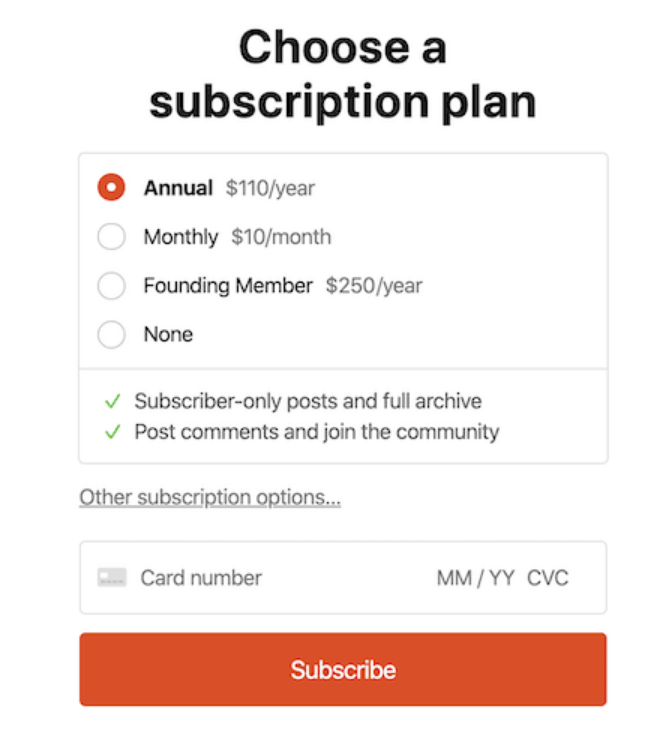
You can always offer discounts for signups. And as a general rule in marketing, it’s better to start off with a higher price than lower. People are always okay when you reduce prices but fight tooth and nail when you try to raise them.
As you can see, there are many things to think about first. I’d suggest reading through Substack’s guide for getting paid as a good starting point.
How does Substack pay people?
When you get to the point of having a paid subscription plan for your readers (and hopefully some actual readers that are paying!) you can start earning that sweet, sweet side hustle money.
Substack uses Stripe as a payments platform, similar to Medium.com.
This comes with pros and cons in itself.
It’s not too difficult to signup for Stripe, but you do have to enter a lot of personal details. It’s even easier if you have one set up already, of course.
Stripe is also limited to certain countries right now due to financial regulations.
Australia, Austria, Belgium, Canada, Denmark, Finland, France, Germany, Hong Kong, Ireland, Italy, Japan, Luxembourg, Netherlands, New Zealand, Norway, Portual, Singapore, Spain, Sweden, Switzerland, the United Kingdom, and the United States.
They are adding more countries every day though. They also have a beta program for countries like India. You can see the full up to date list here.
If you’re on the country list, then you can go through Substack’s paid signup area to setup with Stripe. Alternatively, you can go to Stripe’s site and do it on your own.
As for fees:
- Substack is completely free for your free newsletter subscribers.
- For your paid letter, when it starts earning, Substack will deduct a 10% fee from anything you earn.
So after that plus any taxes you pay, you’ll be left with your new side hustle earnings! Get writing!
What does it take to be successful on Substack?
I write these kinds of articles in the hope that I can save people a lot of time by putting useful information into one place.
So of course, this article wouldn’t be complete without a summary of what I’ve seen works for people on Substack.
- Optimize your bio— Make it funny, tempting, or enticing to the potential reader
- Put your Substack link everywhere — On your social media bio’s, at the end of your email signature, anywhere you can think of
- Invite your F&F — What better way to get the snowball effect going on Substack than by inviting your family and friends or giving them a free promo code to your paid subscription
- Be consistent — If you said you are going to publish once a week, make sure you do so!
- High quality — Whatever your niche, strive to improve your craft of writing to be unique, informative, and with your own personal touch
- Have a niche — As you can see from the examples of writers/podcasters above — every single one of them has a niche. Sadly, a generalist newsletter might be difficult to grow on Substack.
- Find a similar audience — If you’re writing about humor — like I do on the side — it makes sense to hang out where that audience already exists. Other platforms, niche websites, Facebook groups, there’s plenty of communities to participate in and (subtly) promote your newsletter.
- Team up with other authors — If you’re a fan of another similar niche author’s work, consider reaching out to them to cross-promote each other’s content. This can be done on blogs, newsletters, or other platforms. There’s no harm in trying!
There’s also a great comment thread Substack started. The topic is how people grew their first 100 subscribers. Check it out!
The above tips are meant for the beginner blogger. If you are already established on another platform, you’ll have a much easier time bringing over the audience.
- You can import email lists in Substack
- Prepping your followers & ‘tribe’ with offers and discounts for the newsletter
- Ask them for help spreading the word, but be careful not to spam
- Give extra freebies to them — ebooks, exclusive posts, special discounts for only them, etc
For those with a presence and tribe already growing, please be careful to note one thing.
As of the time of this writing, the canonical link won’t change on Substack, even if you import blog posts from elsewhere. I hope this will be changed in the future, but you should know it can affect your SEO if Google determines your posts to be duplicate content.
One easy way around this is to just post the original on Substack, and import it to another platform (like Medium) later on. Most other platforms let you change the canonical link, so Google will be happy.
Another method I’ve seen is to split posts between different platforms. You can put exclusive content on Substack with free content going elsewhere. This is a nice way to build your paid-plans.
What’s next?
If all of the above sounds good to you (as it did to me), I’d suggest doing the following as next steps:
- Go on Substack and search for the area you’re interested in writing about
- Check out the most popular authors or explore different newsletters
- See what they do, check out their profiles, bio’s, payment plans etc for that niche
- Extract what you think fits well for you, and jot that down
- Sign up (it’s pretty easy — takes under 5 minutes when I did it)
- Read through the Substack “Writer Resources” for other useful articles on setting up the newsletter, getting paid, etc
- Start writing, podcasting, and creating!
- Get rich?
Time to build your following! Happy creating and good luck on Substack! Please feel free to sign up through this link to add me as a referrer!
J.J. Pryor
If you want to see more guides, deep dives, and weird humor, please subscribe to my free newsletter, thanks!
You might also be interested in reading about understanding RPM on Google for SEO.


